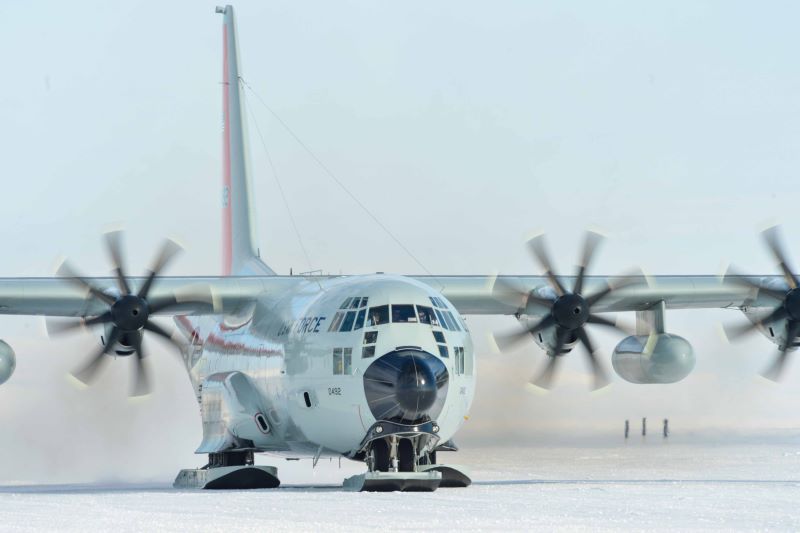
MIL-STD-810 Low Temperature testing (Method 502) is used to evaluate the effects of low temperature on equipment. This laboratory test method is conducted in a test chamber and can be tailored to replicate the anticipated thermal profiles during storage, transit, and operation. This test is intended for evaluating the effects of low temperature on equipment and is not intended for replicating the effects of temperature conditions at high altitudes.
Procedure Selection
Defense standard MIL-STD-810 provides three test procedures for Low Temperature; Storage, Operation, and Manipulation.
- Procedure I – Storage is used to assess the effects of low temperature on equipment in an induced environment. An induced environment refers to a man-made condition. In the case of Low Temperature it would include situations natural airflow is restricted by means of packaging or unconditioned enclosures. In such cases temperatures may reach levels as low as -60°F (-51°C) for areas such as the interior of Alaska.
- Procedure II – Operation is used to evaluate the test item’s ability to operate as specified when subjected to low temperatures. These operating temperatures could be the result of ambient climatic conditions or specific thermal profiles present in an intended operational environment.
- Procedure III – Manipulation is used to assess how easily equipment might be operated, assembled, maintained, or disassembled when operators are wearing heavy winter clothing.
Determining Test Levels
It is necessary to tailor appropriate test temperature cycle and temperature range values from requirements, measurements, and those derived from the Life Cycle Environmental Profile (LCEP). Geographic climatic information is available in Part 3 of the standard to assist in value determinations. MIL-STD-810 uses three categories for defining cold environments:
- Basic Cold (C1) describes cold temperatures found in most of Europe, coastal areas of Canada, high latitude coastal areas, and the northern 84 states.
- Cold (C2) describes anticipated cold temperatures in Canada and Alaska (excluding interior areas) Northern Asia and Scandinavia, and high elevations in the mountain ranges of the Alps, and Andes.
- Severe Cold (C3) includes temperatures found in the interior of Alaska and Canada, Canadian Islands, and Greenland.
When the equipment to be tested is considered to be likely to for worldwide use a value the C3 Severe Cold levels should be used for test. This temperature would be -60°F (-51°C).
Test Duration
Low Temperature can cause a large number of effects on equipment. For certain types of equipment the standard calls for extended durations of exposure to cold temperatures to ensure that the material can perform as specified without degradation of integrity or safety.
- For equipment that is not safety related or nonhazardous a storage period of four hours is required
- For munitions and explosives or equipment that have rubber or plastic components seventy-two hours of exposure is required. This is due the fact that these materials may degrade or deteriorate after long periods of exposure.
- For equipment that include restrained glass, or ceramics, twenty-four hours of exposure is required.
Test Program Considerations
It is often a requirement for product verification that Low Temperature be performed early in a program to determine if design changes or are required. However, consideration should also be given to the synergetic effects of multiple environmental stressors. If concerns exist that the test item might become more brittle it may be advantageous to combine Low Temperature testing with dynamic test such as vibration or shock.
Detailed Environmental Test Plan Templates
CVG Strategy offers EZ-Test Plan Templates for MIL-STD environmental (climatic/dynamic) and EMI/EMC testing documentation. Our Detailed Environmental Test Plans (DETP)s are written as specified in MIL-STD-810 Task 405. They are available for specific applications such as Ground Mobile, Ground Stationary, and Shipboard Controlled, Shipboard Uncontrolled, and Aircraft Military.
These DETPs include appropriate test methods, (such as MIL-STD-810 Low Temperature) addendums for product specific information, test labels for photo identification and data sheets for collection of required data. Profile (LCEP).
Our Electromagnetic Interference Test Plans are written as specified in MIL-STD-461. They contain the test methodology, addendums for product specific information, test labels for photo identification and data sheets. These plans are available for procedures listed in MIL-STD-461 and are also available for MIL-STD-1275, MIL-STD-704, and MIL-STD-1399-300.
Custom Test Plans are also available for applications not covered in the EZ-Test Plan offerings. These plans can be written for any number of applications and their relevant standards.
Put CVG Strategy’s Experience to Work for You
Companies of all sizes, from start up to established product developers, face challenges in product test and evaluation. This can particularly be the case when a product is developed for a new market sector or expanding sales internationally.
Properly tested products prevent costly product recalls, product redesign, and product liability. They maintain customer satisfaction and keep your company’s reputation in good standing. Contact CVG Strategy to see how our testing services can assist your engineering team with MIL-STD-810 Low Temperature Testing or any other test and evaluation concern.
MIL-STD-810 Training Classes
CVG Strategy MIL-STD-810 classes will provide you with the ability to develop and conduct an environmental test program. Our two-day course not only provides you with valuable information about climatic and dynamic test methods but also includes training in the methodology to correctly apply test tailoring relevant to the test item’s expected life cycle.
This course is available online or onsite. Ample time is available for questions and comments so that participants are encouraged to keep engaged. Check here for our online Training Registration Schedule.


